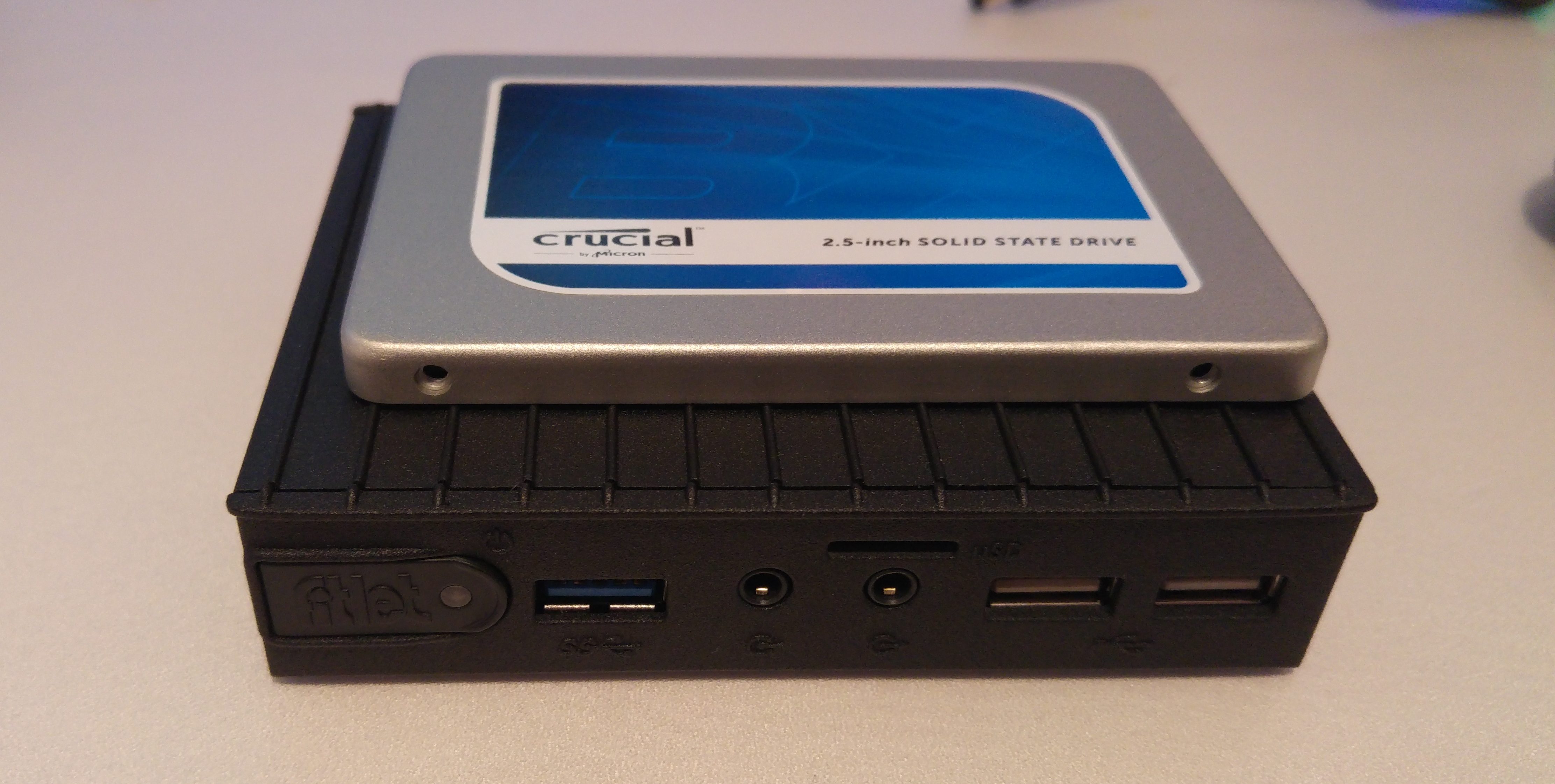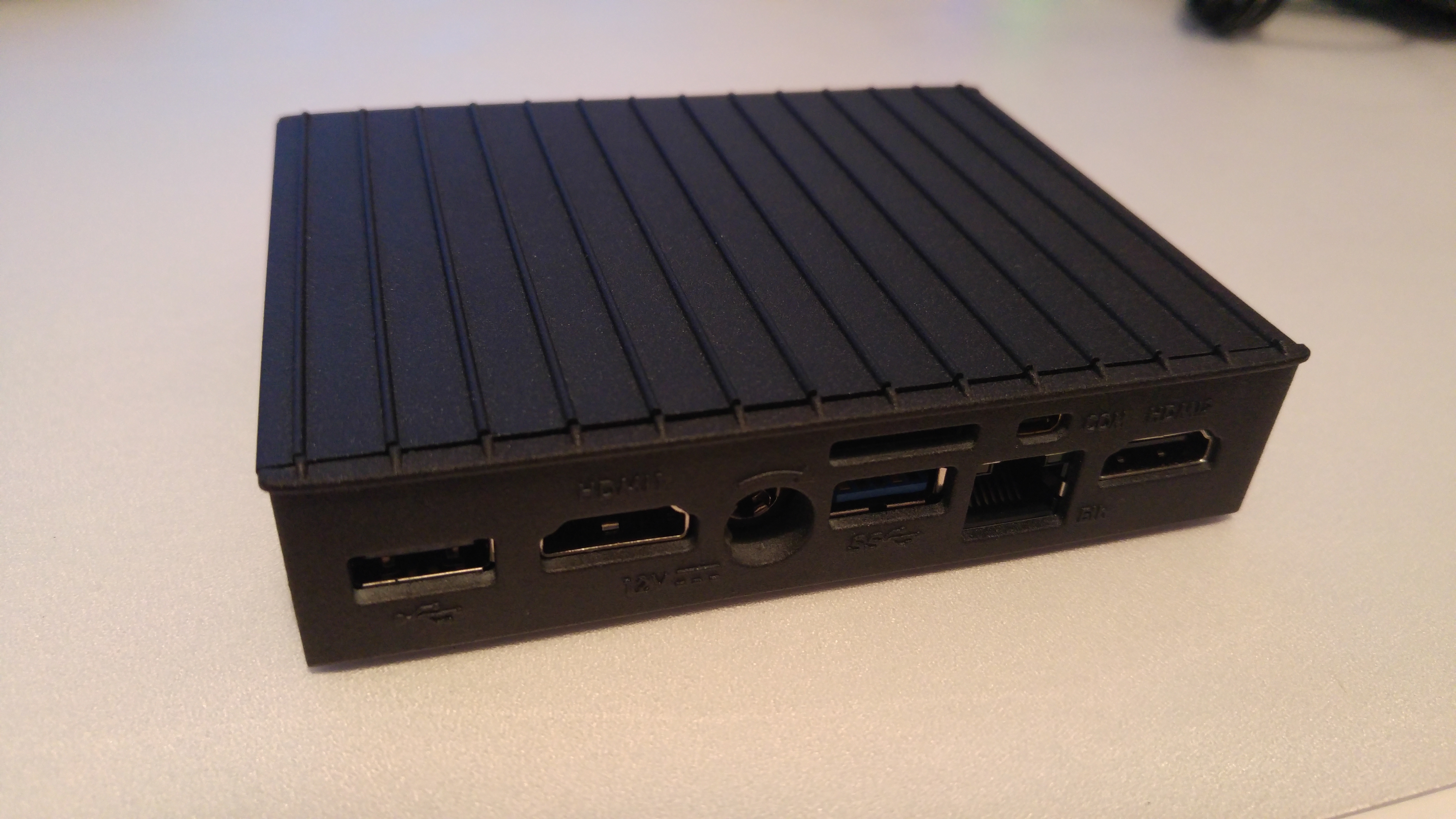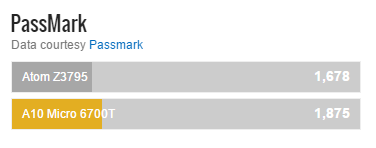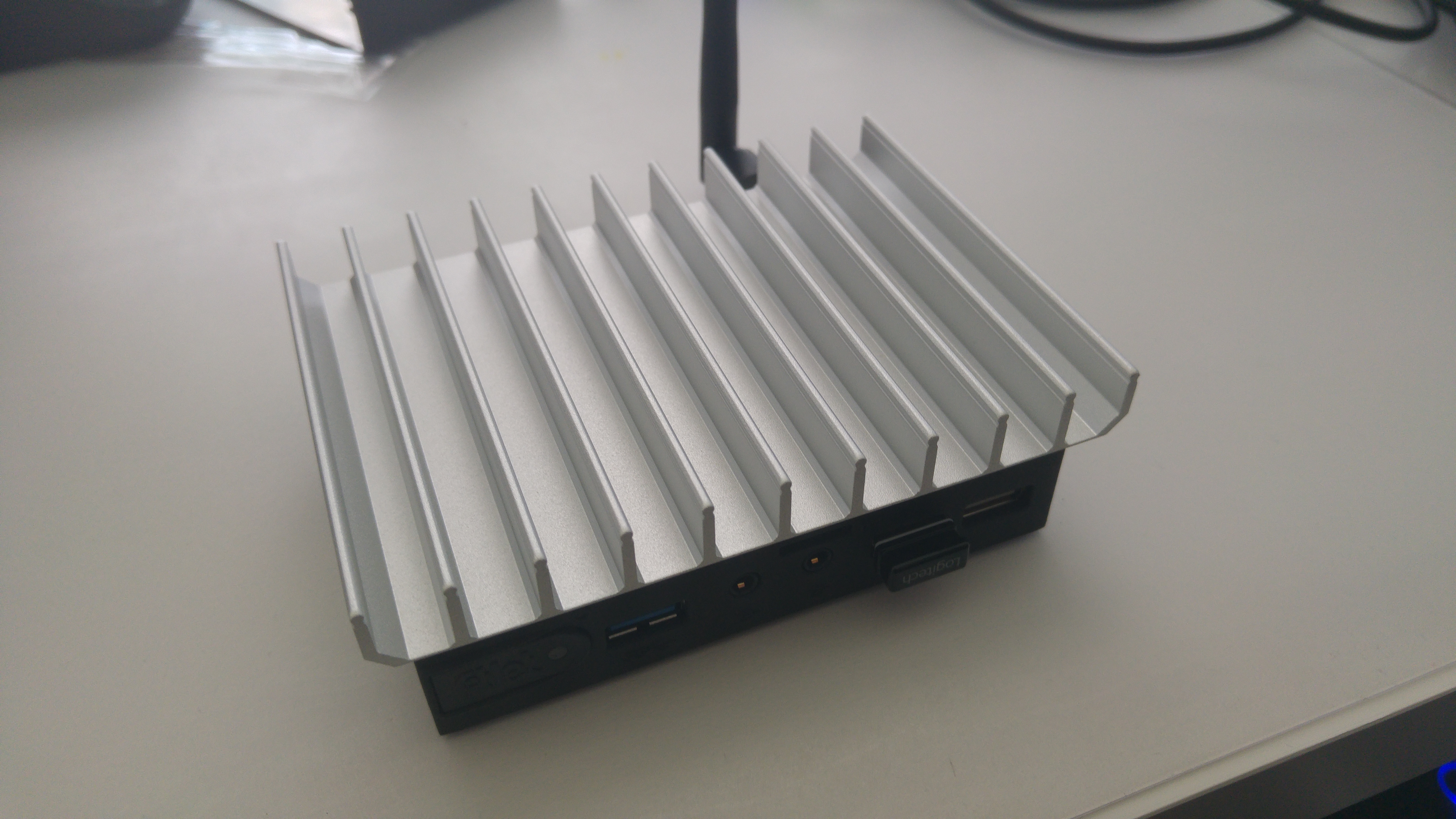Contents
Articles
2025
- The Android Management API doesn't support pulling managed properties (config) from app tracks. Here's how to work around it
- Hands-on with CVE-2025-22442, a work profile sideloading vulnerability affecting most Android devices today
- AAB support for private apps in the managed Google Play iFrame is coming, take a first look here
- What's new (so far) for enterprise in Android 16
2024
- Android 15: What's new for enterprise?
- How Goto's acquisition of Miradore is eroding a once-promising MDM solution
- Google Play Protect no longer sends sideloaded applications for scanning on enterprise-managed devices
- Mobile Pros is moving to Discord
- Avoid another CrowdStrike takedown: Two approaches to replacing Windows
- Introducing MANAGED SETTINGS
- I'm joining NinjaOne
- Samsung announces Knox SDK restrictions for Android 15
- What's new (so far) for enterprise in Android 15
- Google quietly introduces new quotas for unvalidated AMAPI use
- What is Play Auto Install (PAI) in Android and how does it work?
- AMAPI publicly adds support for DPC migration
- How do Android devices become certified?
2023
- Mute @channel & @here notifications in Slack
- A guide to raising better support requests
- Ask Jason: How should we manage security and/or OS updates for our devices?
- Pixel 8 series launches with 7 years of software support
- Android's work profile behaviour has been reverted in 14 beta 5.3
- Fairphone raises the bar with commitment to Android updates
- Product files: The DoorDash T8
- Android's work profile gets a major upgrade in 14
- Google's inactive account policy may not impact Android Enterprise customers
- Product files: Alternative form factors and power solutions
- What's new in Android 14 for enterprise
- Introducing Micro Mobility
- Android Enterprise: A refresher
2022
- What I'd like to see from Android Enterprise in 2023
- Thoughts on Android 12's password complexity changes
- Google Play target API requirements & impact on enterprise applications
- Sunsetting Discuss comment platform
- Google publishes differences between Android and Android Go
- Android Go & EMM support
- Relaunching bayton.org
- AER dropped the 3/5 year update mandate with Android 11, where are we now?
- I made a bet with Google (and lost)
2020
- Product files: Building Android devices
- Google announce big changes to zero-touch
- VMware announces end of support for Device Admin
- Google launch the Android Enterprise Help Community
- Watch: An Android Enterprise discussion with Hypergate
- Listen again: BM podcast #144 - Jason Bayton & Russ Mohr talk Android!
- Google's Android Management API will soon support COPE
- Android Enterprise in 11: Google reduces visibility and control with COPE to bolster privacy.
- The decade that redefined Android in the enterprise
2019
- Why Intune doesn't support Android Enterprise COPE
- VMware WS1 UEM 1908 supports Android Enterprise enrolments on closed networks and AOSP devices
- The Bayton 2019 Android Enterprise experience survey
- Android Enterprise Partner Summit 2019 highlights
- The Huawei ban and Enterprise: what now?
- Dabbling with Android Enterprise in Q beta 3
- Why I moved from Google WiFi to Netgear Orbi
- I'm joining Social Mobile as Director of Android Innovation
- Android Enterprise in Q/10: features and clarity on DA deprecation
- MWC 2019: Mid-range devices excel, 5G everything, form-factors galore and Android Enterprise
- UEM tools managing Android-powered cars
- Joining the Android Enterprise Experts community
- February was an interesting month for OEMConfig
- Google launch Android Enterprise Recommended for Managed Service Providers
- Migrating from Windows 10 Mobile? Here's why you should consider Android
- AER expands: Android Enterprise Recommended for EMMs
- What I'd like to see from Android Enterprise in 2019
2018
- My top Android apps in 2018
- Year in review: 2018
- MobileIron Cloud R58 supports Android Enterprise fully managed devices with work profiles
- Hands on with the Huawei Mate 20 Pro
- Workspace ONE UEM 1810 introduces support for Android Enterprise fully managed devices with work profiles
- G Suite no longer prevents Android data leakage by default
- Live: Huawei Mate series launch
- How to sideload the Digital Wellbeing beta on Pie
- How to manually update the Nokia 7 Plus to Android Pie
- Hands on with the BQ Aquaris X2 Pro
- Hands on with Sony OEMConfig
- The state of Android Enterprise in 2018
- BYOD & Privacy: Don’t settle for legacy Android management in 2018
- Connecting two Synologies via SSH using public and private key authentication
- How to update Rsync on Mac OS Mojave and High Sierra
- Intune gains support for Android Enterprise COSU deployments
- Android Enterprise Recommended: HMD Global launch the Nokia 3.1 and Nokia 5.1
- Android Enterprise Partner Summit 2018 highlights
- Live: MobileIron LIVE! 2018
- Android Enterprise first: AirWatch 9.4 lands with a new name and focus
- Live: Android Enterprise Partner Summit 2018
- Samsung, Oreo and an inconsistent Android Enterprise UX
- MobileIron launch Android Enterprise work profiles on fully managed devices
- Android P demonstrates Google's focus on the enterprise
- An introduction to managed Google Play
- MWC 2018: Android One, Oreo Go, Android Enterprise Recommended & Android Enterprise
- Enterprise ready: Google launch Android Enterprise Recommended
2017
- Year in review: 2017
- Google is deprecating device admin in favour of Android Enterprise
- Hands on with the Sony Xperia XZ1 Compact
- Moto C Plus giveaway
- The state of Android Enterprise in 2017
- Samsung launched a Note 8 for enterprise
- MobileIron officially supports Android Enterprise QR code provisioning
- Android zero-touch enrolment has landed
- MobileIron unofficially supports QR provisioning for Android Enterprise work-managed devices, this is how I found it
- Hands on with the Nokia 3
- Experimenting with clustering and data replication in Nextcloud with MariaDB Galera and SyncThing
- Introducing documentation on bayton.org
- Goodbye Alexa, Hey Google: Hands on with the Google Home
- Restricting access to Exchange ActiveSync
- What is Mobile Device Management?
- 8 tips for a successful EMM deployment
- Long-term update: the fitlet-RM, a fanless industrial mini PC by Compulab
- First look: the FreedomPop V7
- Vault7 and the CIA: This is why we need EMM
- What is Android Enterprise (Android for Work) and why is it used?
- Introducing night mode on bayton.org
- What is iOS Supervision and why is it used?
- Hands on with the Galaxy TabPro S
- Introducing Nextcloud demo servers
- Part 4 - Project Obsidian: Obsidian is dead, long live Obsidian
2016
- My top Android apps 2016
- Hands on with the Linx 12V64
- Wandera review 2016: 2 years on
- Deploying MobileIron 9.1+ on KVM
- Hands on with the Nextcloud Box
- How a promoted tweet landed me on Finnish national news
- Using RWG Mobile for simple, cross-device centralised voicemail
- Part 3 – Project Obsidian: A change, data migration day 1 and build day 2
- Hands on: fitlet-RM, a fanless industrial mini PC by Compulab
- Part 2 - Project Obsidian: Build day 1
- Part 1 - Project Obsidian: Objectives & parts list
- Part 0 - Project Obsidian: Low power NAS & container server
- 5 Android apps improving my Chromebook experience
- First look: Android apps on ChromeOS
- Competition: Win 3 months of free VPS/Container hosting - Closed!
- ElasticHosts review
- ElasticHosts: Cloud Storage vs Folders, what's the difference?
- Adding bash completion to LXD
- Android N: First look & hands-on
- Springs.io - Container hosting at container prices
- Apple vs the FBI: This is why we need MDM
- Miradore Online MDM: Expanding management with subscriptions
- Lenovo Yoga 300 (11IBY) hard drive upgrade
- I bought a Lenovo Yoga 300, this is why I'm sending it back
- Restricting access to Exchange ActiveSync
- Switching to HTTPS on WordPress
2015
2014
- Is CYOD the answer to the BYOD headache?
- BYOD Management: Yes, we can wipe your phone
- A fortnight with Android Wear: LG G Watch review
- First look: Miradore Online free MDM
- Hands on: A weekend with Google Glass
- A month with Wandera Mobile Gateway
- Final thoughts: Dell Venue Pro 11 (Atom)
- Thoughts on BYOD
- Will 2014 bring better battery life?
- My year in review: Bayton.org
- The best purchase I've ever made? A Moto G for my father
2013
2012
- My Top Android Apps 12/12
- The Nexus 7 saga: Resolved
- Recycling Caps Lock into something useful - Ubuntu (12.04)
- The Nexus 7 saga continues
- From Wows to Woes: Why I won't be recommending a Nexus7 any time soon.
- Nexus7: What you need to know
- Why I disabled dlvr.it links on Facebook
- HTC Sense: Changing the lockscreen icons from within ADW
2011
- Push your Google+ posts to Twitter and Facebook
- Using multiple accounts with Google.
- The "Wn-R48" (Windows on the Cr-48)
- Want a Google+ invite?
- Publishing to external sources from Google+
- Dell Streak review. The Phone/Tablet Hybrid
- BlueInput: The Bluetooth HID driver Google forgot to include
- Pushing Buzz to Twitter with dlvr.it
- Managing your social outreach with dlvr.it
- When Awe met Some. The Cr-48 and Gnome3.
- Living with Google's Cr-48 and the cloud.
- Downtime 23-25/04/2011
- Are you practising "safe surfing"?
- The Virtualbox bug: "Cannot access the kernel driver" in Windows
- Putting tech into perspective
2010
- Have a Google Buzz Christmas
- Root a G1 running Android 1.6 without recovery!
- Windows 7 display issues on old Dell desktops
- Google added the Apps flexibility we've been waiting for!
- Part I: My 3 step program for moving to Google Apps
- Downloading torrents
- Completing the Buzz experience for Google Maps Mobile
- Quicktip: Trial Google Apps
- Quicktip: Save internet images fast
- Turn your desktop 3D!
- Part III - Device not compatible - Skype on 3
- Swype not compatible? ShapeWriter!
- Don't wait, get Swype now!
- HideIP VPN. Finally!
- Google enables Wave for Apps domains
- Aspire One touch screen
- Streamline XP into Ubuntu
- Edit a PDF with Zamzar
- Google offering Gmail addresses in the UK
- Google Wave: Revolutionising blogs!
- Hexxeh's Google Chrome OS builds
- Update: Buzz on Windows Mobile
- Alternatives to Internet Explorer
- Wordress 3.0 is coming!
- Skype for WM alternatives
- Browsing on a (data) budget? Opera!
- Buzz on unsupported mobiles
- Buzz on your desktop
- What's all the Buzz?
- Part II: Device not compatible - Skype on 3
- Part I - Device not compatible - Skype on 3
- Dreamscene on Windows 7
- Free Skype with 3? There's a catch..
Change log
Hands on: fitlet-RM, a fanless industrial mini PC by Compulab
Contents
A few weeks ago I got in touch with Compulab in order to get my hands on one of their renowned passively cooled mini PCs. After a brief discussion around their available products, we agreed I’d review one of their to-be-released models when it became available. Earlier this week I received their just-announced fitlet-RM-XA10-LAN, the followup to the fitlet-XA10-LAN AnandTech reviewed some time back, along with a fit-Uptime mini UPS. All product links will be provided at the end.
Who are Compulab?
#Compulab have been around since 1992, starting out as a consultancy company before branching out to CoM/SoM (1997) and later micro PCs (2007) such as the model being reviewed in this article. They’re a market leader in their field specialising in ARM and have repeatedly pushed the boundaries of what can be offered in respect to hardware and size. Their systems can be found today in robotics, industrial applications, surveillance systems and much more.
What is the fitlet-RM?
#The fitlet-RM series is a follow-up to the previously launched fitlet-XA10-LAN/fitlet-iA10 and is aimed towards applications requiring a reliable, power-efficient, hardy system with a minuscule footprint. At 10.8 cm x 8.3 cm x 2.4 cm (0.22l) it’s barely larger than a standard SSD and can fit comfortably in a pocket, in an obscure corner of a rack, hidden in the depths of a larger appliance or fixed unassumingly behind a display.
Despite its size the fitlet-RM is packed with features. The RM-XA10-LAN sent to me comes with the following spec:
CPU: AMD A10 Micro-6700T SoC – Quadcore 1.2GHz (2.2Ghz with boost) @ 4.5W TDP RAM: 8GB DDR3L-1333 non-EEC
Graphics: AMD Radeon R6 Graphics with dual HDMI outputs
Storage: 64GB mSATA internal, support for micro-SD external
Network: 4x Intel 10/100/1000 LAN ports
Other: 3.5mm audio in/out, 2x USB3, 3x USB2, COM port & SIM slot
*RAM and disk are not included as standard
Opting for the fitlet-RM-iA10 would see 4x LAN ports reduced to 2x LAN and the addition of a WIFI/Bluetooth module, though the fitlet-RM-XA10-LAN does come bundled with a USB WIFI n module. The 3x LAN ports are provided through what Compulab calls a “FACET” card. Although these are the only two available configurations currently, Compulab allows for 3rd parties to create their own FACET cards meaning in the future there may be as many FACET cards as there are “FACE” modules – slightly larger cards designed for the bigger fitlet-H, fitlet-T and fit-PC models.
The system is encased in an aluminium & zinc housing which acts like one large heatsink, dissipating heat effectively without the need for a fan thus retaining the ultra compact form factor. It is also strong! Compulab showcased this by running over a fitlet:

As there are no moving parts and the casing is well sealed, it is perfect for applications where the ingress of dirt, humidity or extreme temperatures could be encountered; the fitlet can operate under a wide temperature band ranging from -40°C to 70°C with the parts inside equally capable of handling constant extremes of temperature, shock and vibration. Furthermore with the unique twist-lock power cable, there’s little worry about accidentally removing the fitlet’s power supply:
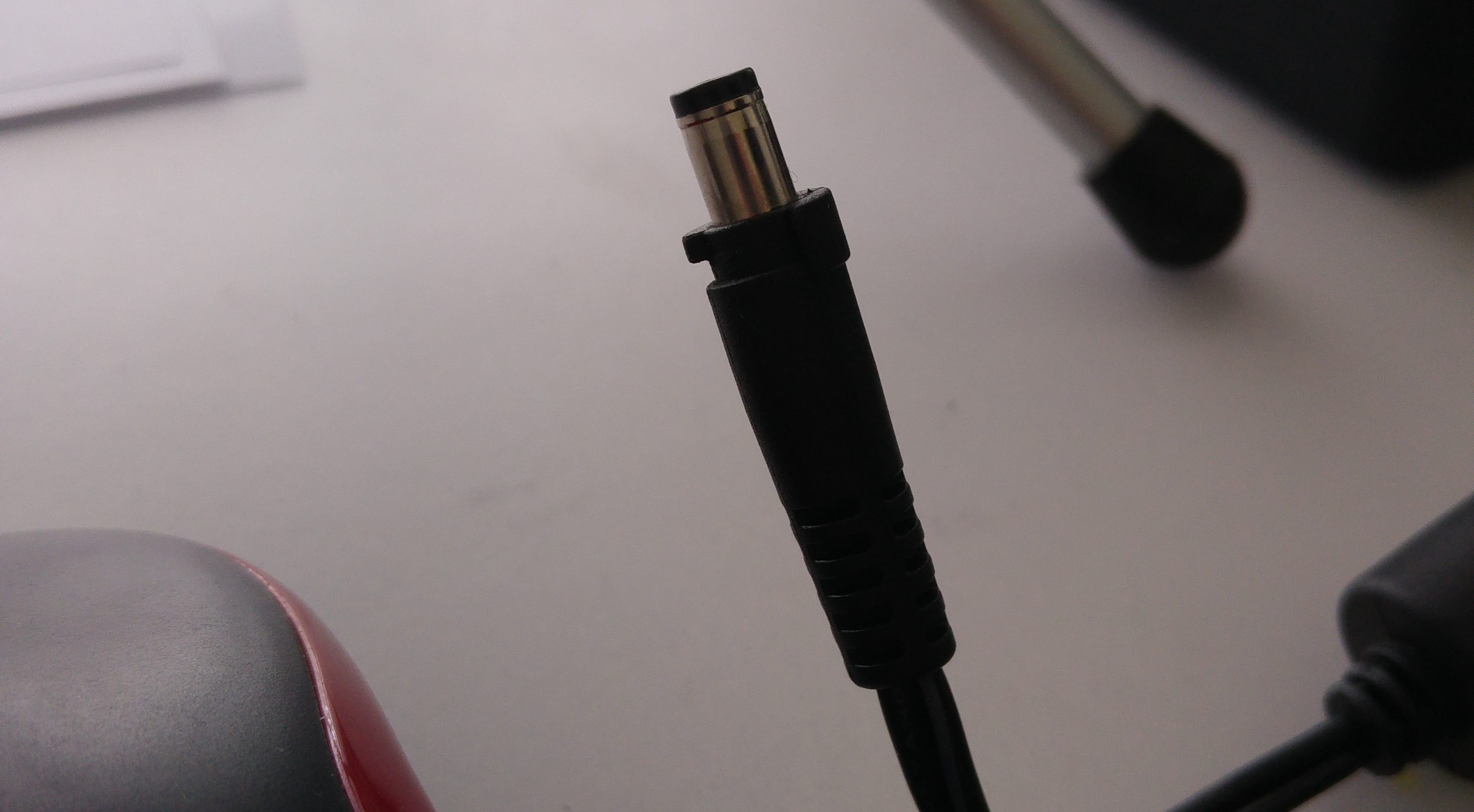
The fitlet-RM series starts at $311 and is currently available from fit-PC (official).
What’s in the box
#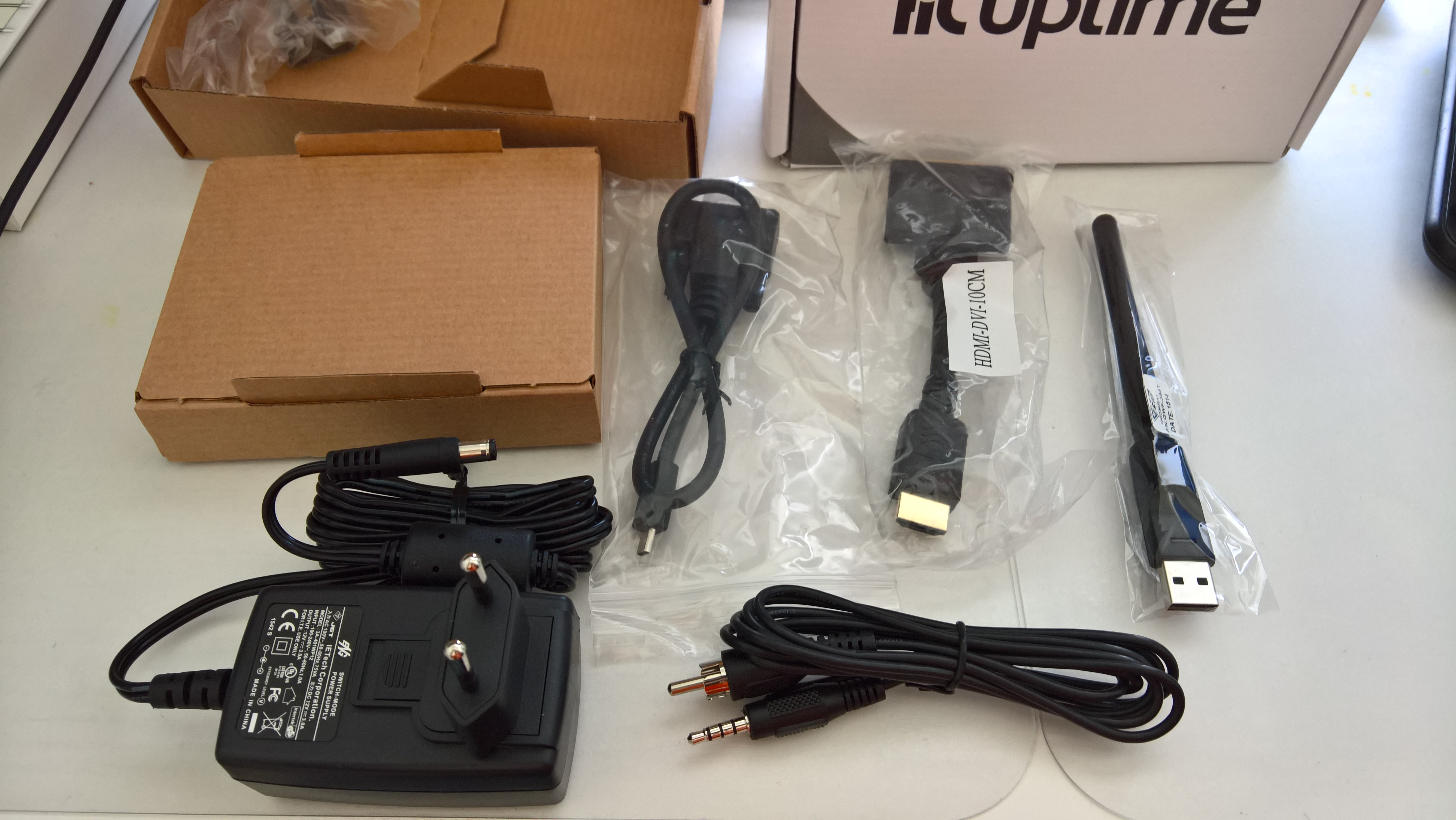
The fitlet arrived with the following components provided:
- The fitlet-RM-AX10-LAN
- Power supply – European and US blades (plugs) provided, UK available
- HDMI to DVI adapter
- Audio 3.5mm to RCA cable
- 802.11n Wifi module
- Mini-serial to DB9-male adapter cable
- mSATA heatsink
This fitlet was pre-built with 8GB RAM and a 64GB mSATA SSD and the heatsink was therefore already installed. Compulab also provided a fit-Uptime UPS.
Separately in addition to this, I purchased:
- fit-Headless 4K
- fitlet heatsink
- fitlet VESA/wall mount
- remote power button
Performance
#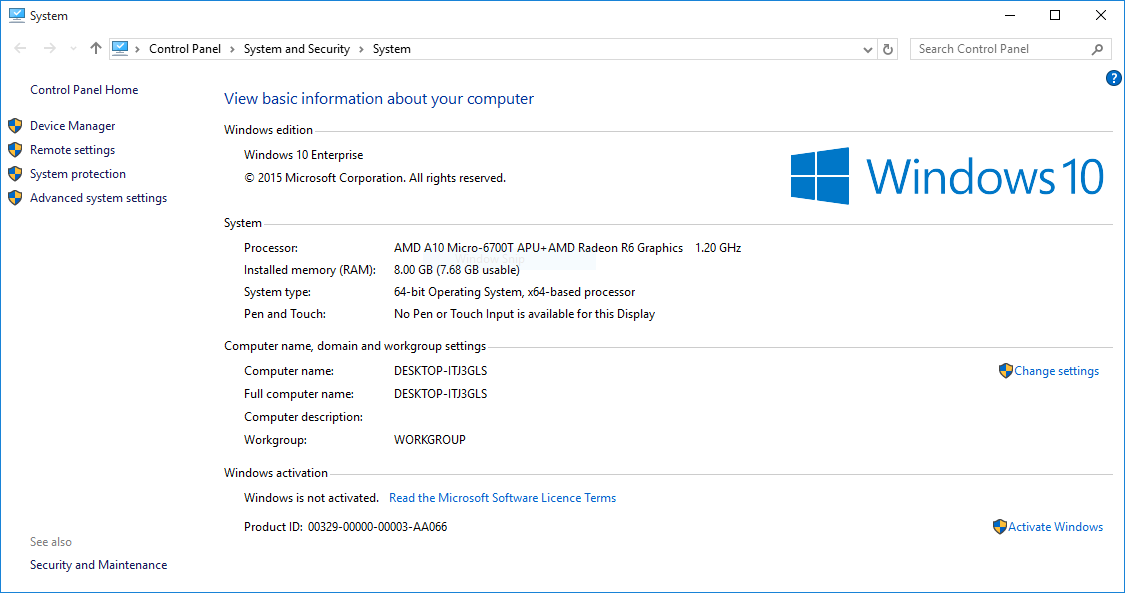
Despite being a low power, 4.5w TDP chip the AMD A10 Micro-6700T is a capable CPU. In benchmarks it outpaces similar and slightly higher-clocked Intel Atoms of the same release period such as the Z3795, a chip commonly used in tablets and laptops, as seen by PassMark’s benchmarks:
I did a few benchmarks of my own on Ubuntu using sysbench running 1 and 4 threads and wasn’t disappointed:
sysbench can be installed on Ubuntu/Debian by running sudo apt install sysbench
jason@fitletr:~$ sysbench --test=cpu --cpu-max-prime=20000 run
sysbench 0.4.12: multi-threaded system evaluation benchmark
Running the test with following options:
Number of threads: 1
[..]
[
Test execution summary:
total time: 24.8739s
total number of events: 10000
total time taken by event execution: 24.8717
per-request statistics:
min: 2.42ms
avg: 2.49ms
max: 5.45ms
approx. 95 percentile: 2.67ms
Threads fairness:
events (avg/stddev): 10000.0000/0.00
execution time (avg/stddev): 24.8717/0.00
jason@fitletr:~$ sysbench --test=cpu --cpu-max-prime=20000 --num-threads=4 run
sysbench 0.4.12: multi-threaded system evaluation benchmark
Running the test with following options:
Number of threads: 4
[..]
Test execution summary:
total time: 8.3709s
total number of events: 10000
total time taken by event execution: 33.4761
per-request statistics:
min: 3.11ms
avg: 3.35ms
max: 23.82ms
approx. 95 percentile: 3.34ms
Threads fairness:
events (avg/stddev): 2500.0000/5.96
execution time (avg/stddev): 8.3690/0.00
For comparison, the AMD FX-6300, a 3.5GHz chip with 6 cores and a 95w TDP, powering my home storage server gets the following from the same 1 and 4 thread test:
jason@ElGrande:~$ sysbench --test=cpu --cpu-max-prime=20000 run
[..]
Test execution summary:
total time: 15.2784s
total number of events: 10000
total time taken by event execution: 15.2770
per-request statistics:
min: 1.42ms
avg: 1.53ms
max: 3.54ms
approx. 95 percentile: 1.56ms
Threads fairness:
events (avg/stddev): 10000.0000/0.00
execution time (avg/stddev): 15.2770/0.00
jason@ElGrande:~$ sysbench --test=cpu --cpu-max-prime=20000 --num-threads=4 run
[..]
Test execution summary:
total time: 4.1375s
total number of events: 10000
total time taken by event execution: 16.5428
per-request statistics:
min: 1.46ms
avg: 1.65ms
max: 25.91ms
approx. 95 percentile: 1.74ms
Threads fairness:
events (avg/stddev): 2500.0000/66.11
execution time (avg/stddev): 4.1357/0.00
Generally the fitlet feels quick and extremely responsive. This is no doubt thanks in part to the mSATA SSD and 8GB RAM, however in testing both using OPNsense and Ubuntu server the fitlet responded reliably and quickly both acting as a router for the 40 or so network endpoints I have at home and later as a media server for streaming from emby to my Nvidia Shield TV without a fault. Load remained minimal almost all of the time.
The only time I saw any notable struggle was when running Windows 10 from a USB3 hard drive, however this was clearly due to the bottleneck associated with running an OS from a 2.5″ HDD over USB3. Windows being the resource hog it is did push the CPU usage up more often than on either Ubuntu or FreeBSD, but nothing that would be considered untoward.

For networking applications, it goes without saying the 4 LAN ports on the fitlet-RM-XA10-LAN are fantastic. For server applications, being able to bond multiple connections has its own advantages; 4 individual GB ports all responding to one network address makes for a very fast streaming/storage server with no bottleneck on network. Naturally on a 64GB mSATA there’s not a lot of storage to be had, however it’d be just as easy to install 1TB of mSATA storage as well as multiple USB drives and even eSATA on the fitlet-RM-iA10.
Temperature control
#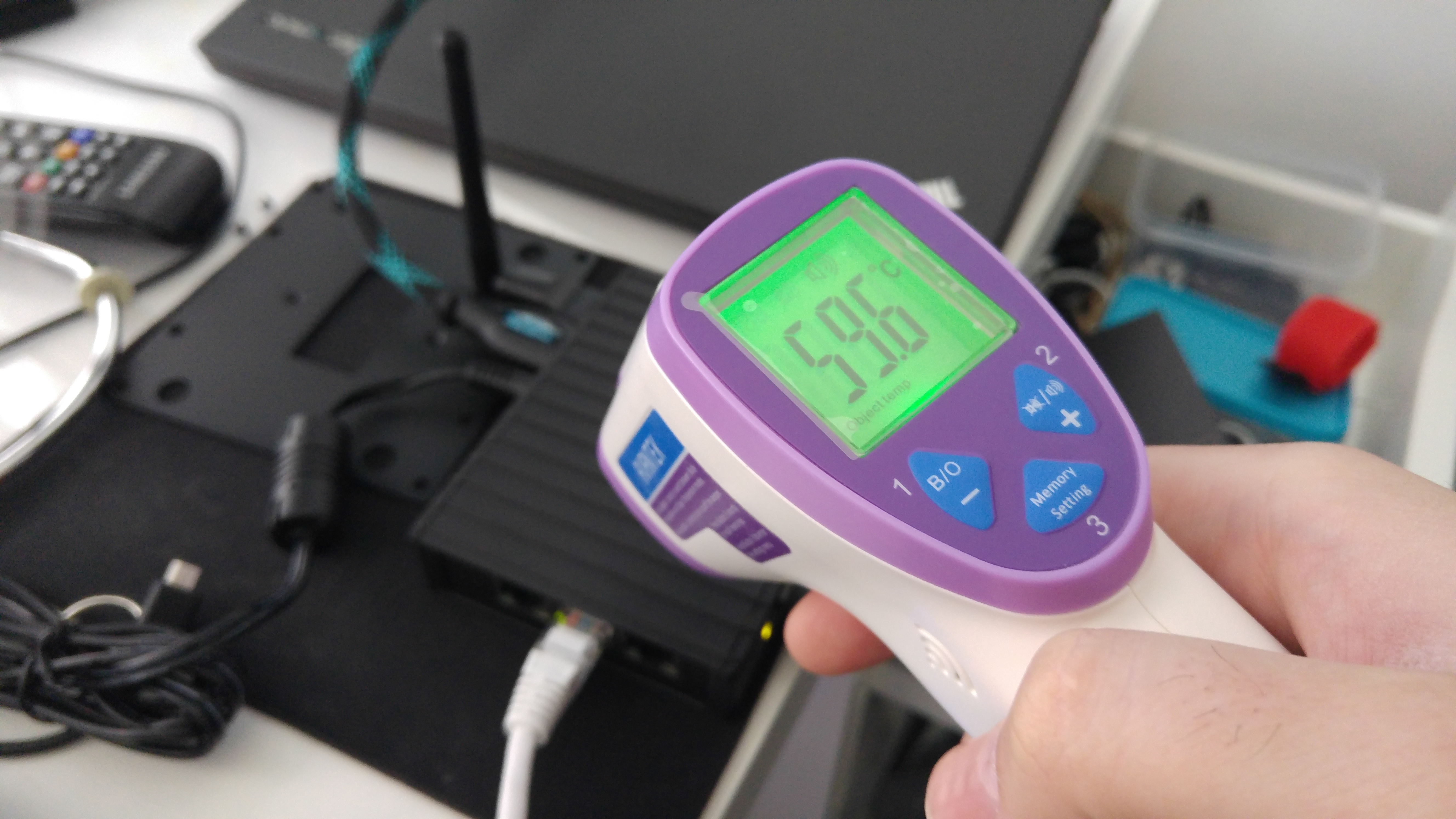
Heat can be a concern for any passively cooled device and the fitlet is no exception. Installing Windows updates saw the fitlet steadily increase in temperature to a whopping 59.6°C before cooling back down to the low 50’s when complete. At those temperatures the fitlet is simply too hot to touch, though they are well within the operating range and therefore should be nothing to worry about.
In an industrial or enterprise environment this shouldn’t be an issue. It did have me wondering where I’d mount the device though due to the heat generated; the original plan to mount it within the case of my storage server (the VESA bracket suits 120mm fan mounting points nicely) may not be suitable, as the server will need to work harder to cool both systems.
Here’s where the fitlet heatsink comes in:
At the moment only the bare aluminium version is available, but regardless of colour the heatsink does the job perfectly. I noted a temperature drop of about 11°C to the low 40’s resulting in a PC that is no longer too hot to touch and therefore more manageable.
Compulab say they’re working on a black version of the heatsink, once it becomes available soon I’ll swap it out.
What is the fit-Uptime?
#
The fit-Uptime is a micro-UPS designed specifically to be entirely plug and play. It uses an 18Wh lithium-polymer battery and is capable of powering the fitlet for over 3 hours at a draw of 5w.
Unlike some UPS systems, the fit-Uptime can switch back and forth between mains and battery power in an instant. The fitlet will never detect the change and will never suffer instability as a result.
As it’s such a simple device, there’s no capability for the fitlet to know when it has been switched to battery power, nor when that battery power is about to run out. Due to this the fitlet won’t be able to shut itself down safely on loss of mains power, relying either on manual intervention to shut it down, or for mains power to return before the 3 hours is up (which in fairness is a nice, long window to work with).
Compulab are considering a “pro” version in the future that will be able to directly interact with the fitlet in order to add the functionality that is currently missing here.
I have so far used fit-Uptime to move the fitlet to various parts of the house while setting different things up. It switches between battery and mains flawlessly, remains accessible over the network (via WIFI) at all times, meaning I can leave SSH connections open and it hasn’t glitched even once. I haven’t run the UPS to 0% battery yet, but the fitlet has been sat on battery power for over an hour on occasions with no problems at all. Living in a location which suffers the occasional power outage, the fit-Uptime is a highly appreciated little piece of hardware to me!
The fit-Uptime is available from fit-PC (official) for $68.
Conclusion
#The fitlet is by far the smallest, most useful mini-PC I’ve gotten my hands on so far. I’ve used NUCs in the past and while conveniently small they’re often hampered by limitations in hardware or cost.
The dual HDMI make running a dual display setup such as my 2 Asus VS247HR 23.6″ monitors a breeze for desktop environments, while on the server side the 4 Intel LAN ports and low-power (but aptly powerful) system make for a perfect little pfsense/OPNsense (or other) system for advanced routing.
Indeed it can get warm, but such is the plight of fanless systems; particularly those with literally no internal space utilising the casing directly for heat dissipation. When tucked out of the way in an open environment this will never be an issue.
If I were to bring up one minor complaint it would be only that the power button is a little awkward to depress. It requires quite a deep push to turn on/off and would benefit greatly if it were more of a static button with a few mm of travel, similar to that of the fit-Uptime.
In combination with the fit-Uptime I envision the fitlet will ultimately – just as advertised – be one of the most resilient and reliable systems I’ll ever run. For the price I wouldn’t have expected a system as decent as this.
Product links
#fitlet heatsync: Amazon UK
fitlet remote power button: Amazon UK
fitlet VESA/wall mount: Amazon UK
fit-Headless: Amazon UK
fit-Uptime: fit-PC (official)
fitlet-RM-XA10-LAN barebones: fit-PC (official) – links to all fitlet models
—
Are you looking for a mini-PC? Are you considering the fitlet-RM? Let me know in the comments, @jasonbayton on twitter or via my brand new facebook page @bayton.org!
Articles
2025
- The Android Management API doesn't support pulling managed properties (config) from app tracks. Here's how to work around it
- Hands-on with CVE-2025-22442, a work profile sideloading vulnerability affecting most Android devices today
- AAB support for private apps in the managed Google Play iFrame is coming, take a first look here
- What's new (so far) for enterprise in Android 16
2024
- Android 15: What's new for enterprise?
- How Goto's acquisition of Miradore is eroding a once-promising MDM solution
- Google Play Protect no longer sends sideloaded applications for scanning on enterprise-managed devices
- Mobile Pros is moving to Discord
- Avoid another CrowdStrike takedown: Two approaches to replacing Windows
- Introducing MANAGED SETTINGS
- I'm joining NinjaOne
- Samsung announces Knox SDK restrictions for Android 15
- What's new (so far) for enterprise in Android 15
- Google quietly introduces new quotas for unvalidated AMAPI use
- What is Play Auto Install (PAI) in Android and how does it work?
- AMAPI publicly adds support for DPC migration
- How do Android devices become certified?
2023
- Mute @channel & @here notifications in Slack
- A guide to raising better support requests
- Ask Jason: How should we manage security and/or OS updates for our devices?
- Pixel 8 series launches with 7 years of software support
- Android's work profile behaviour has been reverted in 14 beta 5.3
- Fairphone raises the bar with commitment to Android updates
- Product files: The DoorDash T8
- Android's work profile gets a major upgrade in 14
- Google's inactive account policy may not impact Android Enterprise customers
- Product files: Alternative form factors and power solutions
- What's new in Android 14 for enterprise
- Introducing Micro Mobility
- Android Enterprise: A refresher
2022
- What I'd like to see from Android Enterprise in 2023
- Thoughts on Android 12's password complexity changes
- Google Play target API requirements & impact on enterprise applications
- Sunsetting Discuss comment platform
- Google publishes differences between Android and Android Go
- Android Go & EMM support
- Relaunching bayton.org
- AER dropped the 3/5 year update mandate with Android 11, where are we now?
- I made a bet with Google (and lost)
2020
- Product files: Building Android devices
- Google announce big changes to zero-touch
- VMware announces end of support for Device Admin
- Google launch the Android Enterprise Help Community
- Watch: An Android Enterprise discussion with Hypergate
- Listen again: BM podcast #144 - Jason Bayton & Russ Mohr talk Android!
- Google's Android Management API will soon support COPE
- Android Enterprise in 11: Google reduces visibility and control with COPE to bolster privacy.
- The decade that redefined Android in the enterprise
2019
- Why Intune doesn't support Android Enterprise COPE
- VMware WS1 UEM 1908 supports Android Enterprise enrolments on closed networks and AOSP devices
- The Bayton 2019 Android Enterprise experience survey
- Android Enterprise Partner Summit 2019 highlights
- The Huawei ban and Enterprise: what now?
- Dabbling with Android Enterprise in Q beta 3
- Why I moved from Google WiFi to Netgear Orbi
- I'm joining Social Mobile as Director of Android Innovation
- Android Enterprise in Q/10: features and clarity on DA deprecation
- MWC 2019: Mid-range devices excel, 5G everything, form-factors galore and Android Enterprise
- UEM tools managing Android-powered cars
- Joining the Android Enterprise Experts community
- February was an interesting month for OEMConfig
- Google launch Android Enterprise Recommended for Managed Service Providers
- Migrating from Windows 10 Mobile? Here's why you should consider Android
- AER expands: Android Enterprise Recommended for EMMs
- What I'd like to see from Android Enterprise in 2019
2018
- My top Android apps in 2018
- Year in review: 2018
- MobileIron Cloud R58 supports Android Enterprise fully managed devices with work profiles
- Hands on with the Huawei Mate 20 Pro
- Workspace ONE UEM 1810 introduces support for Android Enterprise fully managed devices with work profiles
- G Suite no longer prevents Android data leakage by default
- Live: Huawei Mate series launch
- How to sideload the Digital Wellbeing beta on Pie
- How to manually update the Nokia 7 Plus to Android Pie
- Hands on with the BQ Aquaris X2 Pro
- Hands on with Sony OEMConfig
- The state of Android Enterprise in 2018
- BYOD & Privacy: Don’t settle for legacy Android management in 2018
- Connecting two Synologies via SSH using public and private key authentication
- How to update Rsync on Mac OS Mojave and High Sierra
- Intune gains support for Android Enterprise COSU deployments
- Android Enterprise Recommended: HMD Global launch the Nokia 3.1 and Nokia 5.1
- Android Enterprise Partner Summit 2018 highlights
- Live: MobileIron LIVE! 2018
- Android Enterprise first: AirWatch 9.4 lands with a new name and focus
- Live: Android Enterprise Partner Summit 2018
- Samsung, Oreo and an inconsistent Android Enterprise UX
- MobileIron launch Android Enterprise work profiles on fully managed devices
- Android P demonstrates Google's focus on the enterprise
- An introduction to managed Google Play
- MWC 2018: Android One, Oreo Go, Android Enterprise Recommended & Android Enterprise
- Enterprise ready: Google launch Android Enterprise Recommended
2017
- Year in review: 2017
- Google is deprecating device admin in favour of Android Enterprise
- Hands on with the Sony Xperia XZ1 Compact
- Moto C Plus giveaway
- The state of Android Enterprise in 2017
- Samsung launched a Note 8 for enterprise
- MobileIron officially supports Android Enterprise QR code provisioning
- Android zero-touch enrolment has landed
- MobileIron unofficially supports QR provisioning for Android Enterprise work-managed devices, this is how I found it
- Hands on with the Nokia 3
- Experimenting with clustering and data replication in Nextcloud with MariaDB Galera and SyncThing
- Introducing documentation on bayton.org
- Goodbye Alexa, Hey Google: Hands on with the Google Home
- Restricting access to Exchange ActiveSync
- What is Mobile Device Management?
- 8 tips for a successful EMM deployment
- Long-term update: the fitlet-RM, a fanless industrial mini PC by Compulab
- First look: the FreedomPop V7
- Vault7 and the CIA: This is why we need EMM
- What is Android Enterprise (Android for Work) and why is it used?
- Introducing night mode on bayton.org
- What is iOS Supervision and why is it used?
- Hands on with the Galaxy TabPro S
- Introducing Nextcloud demo servers
- Part 4 - Project Obsidian: Obsidian is dead, long live Obsidian
2016
- My top Android apps 2016
- Hands on with the Linx 12V64
- Wandera review 2016: 2 years on
- Deploying MobileIron 9.1+ on KVM
- Hands on with the Nextcloud Box
- How a promoted tweet landed me on Finnish national news
- Using RWG Mobile for simple, cross-device centralised voicemail
- Part 3 – Project Obsidian: A change, data migration day 1 and build day 2
- Hands on: fitlet-RM, a fanless industrial mini PC by Compulab
- Part 2 - Project Obsidian: Build day 1
- Part 1 - Project Obsidian: Objectives & parts list
- Part 0 - Project Obsidian: Low power NAS & container server
- 5 Android apps improving my Chromebook experience
- First look: Android apps on ChromeOS
- Competition: Win 3 months of free VPS/Container hosting - Closed!
- ElasticHosts review
- ElasticHosts: Cloud Storage vs Folders, what's the difference?
- Adding bash completion to LXD
- Android N: First look & hands-on
- Springs.io - Container hosting at container prices
- Apple vs the FBI: This is why we need MDM
- Miradore Online MDM: Expanding management with subscriptions
- Lenovo Yoga 300 (11IBY) hard drive upgrade
- I bought a Lenovo Yoga 300, this is why I'm sending it back
- Restricting access to Exchange ActiveSync
- Switching to HTTPS on WordPress
2015
2014
- Is CYOD the answer to the BYOD headache?
- BYOD Management: Yes, we can wipe your phone
- A fortnight with Android Wear: LG G Watch review
- First look: Miradore Online free MDM
- Hands on: A weekend with Google Glass
- A month with Wandera Mobile Gateway
- Final thoughts: Dell Venue Pro 11 (Atom)
- Thoughts on BYOD
- Will 2014 bring better battery life?
- My year in review: Bayton.org
- The best purchase I've ever made? A Moto G for my father
2013
2012
- My Top Android Apps 12/12
- The Nexus 7 saga: Resolved
- Recycling Caps Lock into something useful - Ubuntu (12.04)
- The Nexus 7 saga continues
- From Wows to Woes: Why I won't be recommending a Nexus7 any time soon.
- Nexus7: What you need to know
- Why I disabled dlvr.it links on Facebook
- HTC Sense: Changing the lockscreen icons from within ADW
2011
- Push your Google+ posts to Twitter and Facebook
- Using multiple accounts with Google.
- The "Wn-R48" (Windows on the Cr-48)
- Want a Google+ invite?
- Publishing to external sources from Google+
- Dell Streak review. The Phone/Tablet Hybrid
- BlueInput: The Bluetooth HID driver Google forgot to include
- Pushing Buzz to Twitter with dlvr.it
- Managing your social outreach with dlvr.it
- When Awe met Some. The Cr-48 and Gnome3.
- Living with Google's Cr-48 and the cloud.
- Downtime 23-25/04/2011
- Are you practising "safe surfing"?
- The Virtualbox bug: "Cannot access the kernel driver" in Windows
- Putting tech into perspective
2010
- Have a Google Buzz Christmas
- Root a G1 running Android 1.6 without recovery!
- Windows 7 display issues on old Dell desktops
- Google added the Apps flexibility we've been waiting for!
- Part I: My 3 step program for moving to Google Apps
- Downloading torrents
- Completing the Buzz experience for Google Maps Mobile
- Quicktip: Trial Google Apps
- Quicktip: Save internet images fast
- Turn your desktop 3D!
- Part III - Device not compatible - Skype on 3
- Swype not compatible? ShapeWriter!
- Don't wait, get Swype now!
- HideIP VPN. Finally!
- Google enables Wave for Apps domains
- Aspire One touch screen
- Streamline XP into Ubuntu
- Edit a PDF with Zamzar
- Google offering Gmail addresses in the UK
- Google Wave: Revolutionising blogs!
- Hexxeh's Google Chrome OS builds
- Update: Buzz on Windows Mobile
- Alternatives to Internet Explorer
- Wordress 3.0 is coming!
- Skype for WM alternatives
- Browsing on a (data) budget? Opera!
- Buzz on unsupported mobiles
- Buzz on your desktop
- What's all the Buzz?
- Part II: Device not compatible - Skype on 3
- Part I - Device not compatible - Skype on 3
- Dreamscene on Windows 7
- Free Skype with 3? There's a catch..
